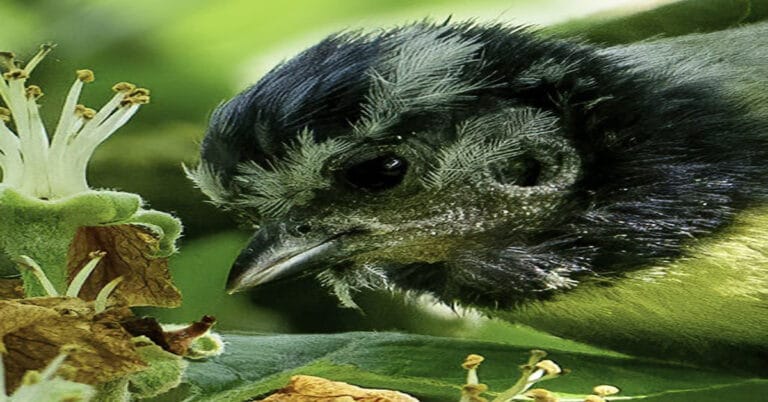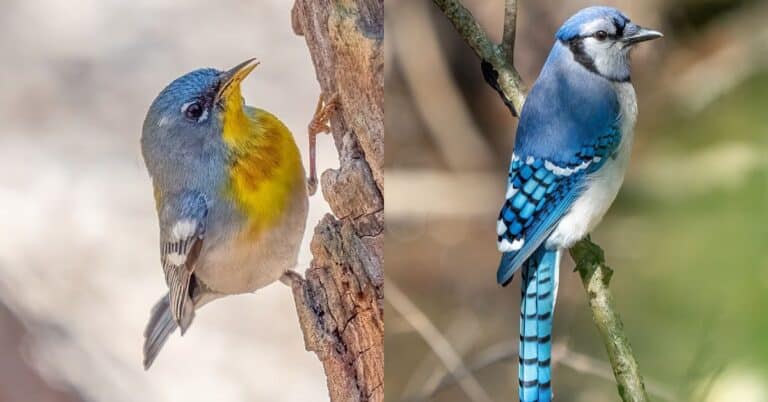Birds Nest – Unique and Exquisite Types
A birds nest is truly the miracle of nature. Bundles of the rods, leaves, branches and other woven materials create a lightweight and cohesive house for eggs and hatchlings.
There are many different types of birds nest found in nature. Each of them comes with unique characteristics and structure. Therefore, learning about them and exploring them can be very interesting things to do.
What Is Birds Nest?
Birds nest is where birds lay their eggs, incubate them, and then raise the babies. It is like a specific structure that the birds build. Nests can be like the grassy cup, typically built by Eurasian blackbirds or American robins. Also, the structure can be woven and hung, which is done by a village weaver and Montezuma oropendola.
Some birds build their nest in the sand; others can do so by burrowing in the ground. The nest can be a chamber drilled into an old tree or a pile of vegetation. Another interesting example of the nests is the mix of mud and dried saliva, which has a little tunnel entrance. It is believed that hummingbirds have the smallest nests of all. It is like a tiny cup.
Some bird species do not build nests. Those ones typically lay the eggs on the rocky edges, on cliffs, or on the ground. The birds that have brood parasite traits put their eggs in other birds nest.
Typically, the birds renew or rebuild their nests every year. In some species, females do most of the construction and work. However, in some polygynous bird species, the male also does the work.
Types Of Birds Nest
Varieties of birds nest include the traditional cup made of braided sticks that resembles a robin’s nest. Shorebird and nightjar nests are simply a few little divots in the ground. Some of the most intricately woven baskets are made by orioles, and they dangle from tree branches like pendulums. A few species, such as kingfishers, puffins, and burrowing owls, build their nests in tunnels beneath the Earth.
So, let’s explore those different varieties of birds nests up close.
Platform Nests
Large-size birds typically build platform nests. They are elevated from the ground, which protects them from predators. Typically, those types of birds nest belong to raptors and have been used for several years. The nests are large enough to withstand the storms and stress caused by wings.
The bald eagle is the world’s biggest birds nest constructor. With about 10 feet broad, 20 feet deep, and more than 4,400 pounds, an eagle’s nest in Florida was deemed the biggest in 1963. The average bald eagle nest is between 2 and 4 feet tall, with a circumference of 5 to 6 feet. Building a nest may take three months. Eagles frequently build on their same nests year after year.
Pendant Nest
One of the great examples of pendent nest builders is the oriole. When the breeding is active in warmer seasons, it is almost impossible to spot their nest because of the foliage. However, in winter, once the leaves are gone, and only branches are left, they are very easy to see.
Those little creatures use materials to build the nests include twine, grass, and even horsehair. Typically, they will use anything available to them. After the outer part of the nest is built, they line it with soft materials. Those soft “blankets” are animal wool, feathers, and fibers from different plants.
The Altamira Oriole, found in the central parts of America, builds the longest dangling nests among all species. The nest can be hung from the branch for more than 2 feet.
Cup Nests
Cup nests are nests with hemispherical insides and smooth outsides. They come with deep depressions where the eggs are laid. The cup nests are built by passerines and hummingbirds.
As already mentioned above, hummingbirds are the smallest birds in the world and, therefore, have tiny nests. They build nests on the tree branches. The materials used are spider webs and plants. Some species even decorate their “home” with lichen and flakes.
Anna’s hummingbirds are observed to lay the eggs well before finishing the nest-building process. Once the eggs are laid, they keep building the nest sidewalls. The unique characteristic of those tiny nests is that they can stretch.
The mother lays two eggs that are the size of black beans. Once the babies are born and start growing, the nest starts to expand as they become larger.
Scrape Nest
Some bird species get away with constructing hardly any nests at all. However, this does not imply that they approach egg laying carelessly. Piping plovers and black skimmers, among others, make their nests on the beaches.
They carve the shallow depressions in the sand and lay their eggs there. Killdeers like to build simple nests by putting eggs in the open, typically on gravel or mud, and then completing them with twigs, rocks, and other natural materials.
Those nests have a deep rim. This keeps the eggs in place and helps them not to roll away. The materials that are used also help the eggs not to sink in the sandy and muddy soil in case the nest gets flooded.
The complex camouflage coloring of these species’ eggs is what makes them distinctive. The eggs frequently have speckling that matches the sand particles in the improvised nests.
Mound Nests
Mound nests are typical of Australian megapodes. They bury the eggs and create mounds of soil. The additional materials are also twigs, sticks, branches, and leaves. They put the eggs on the rotting mass. The heat that is generated from the mass keeps the eggs warm and helps with the incubation process.
The size of the mound nests can be unbelievably large. They can weigh more than 50 tons and are very large. Typically, in the species of birds that build mud nests, the males are the nest constructors. They use their legs and feet in the building process. Mounds can be reused for several seasons. Flamingos typically use their beaks to build mound nests.
Cliffside Nests
Another interesting type of birds nest is the cliffside nest. Such structures are typically made by guillemots and murres. They are observed to build their nest on the coastal, rocky cliffs. Some species do not make any structures, instead, they lay eggs that have a pointy shape in the end. This way, the egg is protected from rolling over and falling from the edge.
The eggs that are laid on such sites have higher protection from predators. They are up on the cliffs, and therefore, not many creatures can go up there to hunt them. The cliff nester birds do not only lay their eggs on the coasts. For example, the falcons and condors are the birds that put their eggs on the cliffs but not on the coasts. Their nests are built with sticks and are located in crevices.
Floating Nest
Many ducks and other water birds build their nests in highland grasslands far from bodies of water. Others build their nests just on the surface of the water. The floating nests species include coots, grebes, loons, and gallinules.
Due to the fact that eggs will sink when placed in water, they use specific tricks. They build the nests with the materials that float. The materials include reeds, cattails, mud, and aquatic plants. They put them into emerging plants to hide the nests and prevent them from vanishing.
Burrow Nests
Burrows is a subterranean form of birds nest. For example, some species of owls found in the territories of Florida dig their own burrows underground. However, the species that are found in the west do not tire themselves to do this job and instead use the burrows of other animals.
Typically, they occupy excavated tunnels dug by tortoises, badgers, prairie dogs, and other digger animals. The birds that make their nests underground include Atlantic puffins, belted kingfishers, and bank swallows.
The burrow nests are typically the horizontal tunnels that come with the chambers for the eggs. Such nests have vertical dirt cliffs. The length varies and typically depends on the species. For example, the tunnels made by sand martins are typically 20-35 inches (50-90cm) in length. e
Cavity Nesters
Cavity nesters are the birds that build their nests in the trees and cactus. Such birds are woodpeckers. They drill holes in the older trees to lay the eggs there. Those birds use chisel-like bills to make the excavations of the cavity nests. The process of reconstruction lasts for about two weeks.
Those birds carefully choose the branches and typically make nests on the side of the branch, so it will not be visible to predators. Most species of woodpeckers only occupy the cavities for one year.
The interesting thing is that after they leave, the secondary cavity nesters appear. These include chickadees, swallows, and bluebirds. They use the holes that already exist and make the “house” from them.
Bottom Line – Birds Nest
In this article, we explored and discussed different types of birds nest. It is fascinating how those little creatures create unique structures adapted to their living environment. The birds keep surprising us with their abilities, starting with the caves and ending with cup nests.

Nato is a content writer and researcher with a background in psychology who’s eager to explore the wonders of nature. As a travel enthusiast and animal lover, she hopes to inspire others to discover and cherish the beauty and importance of the natural world.







